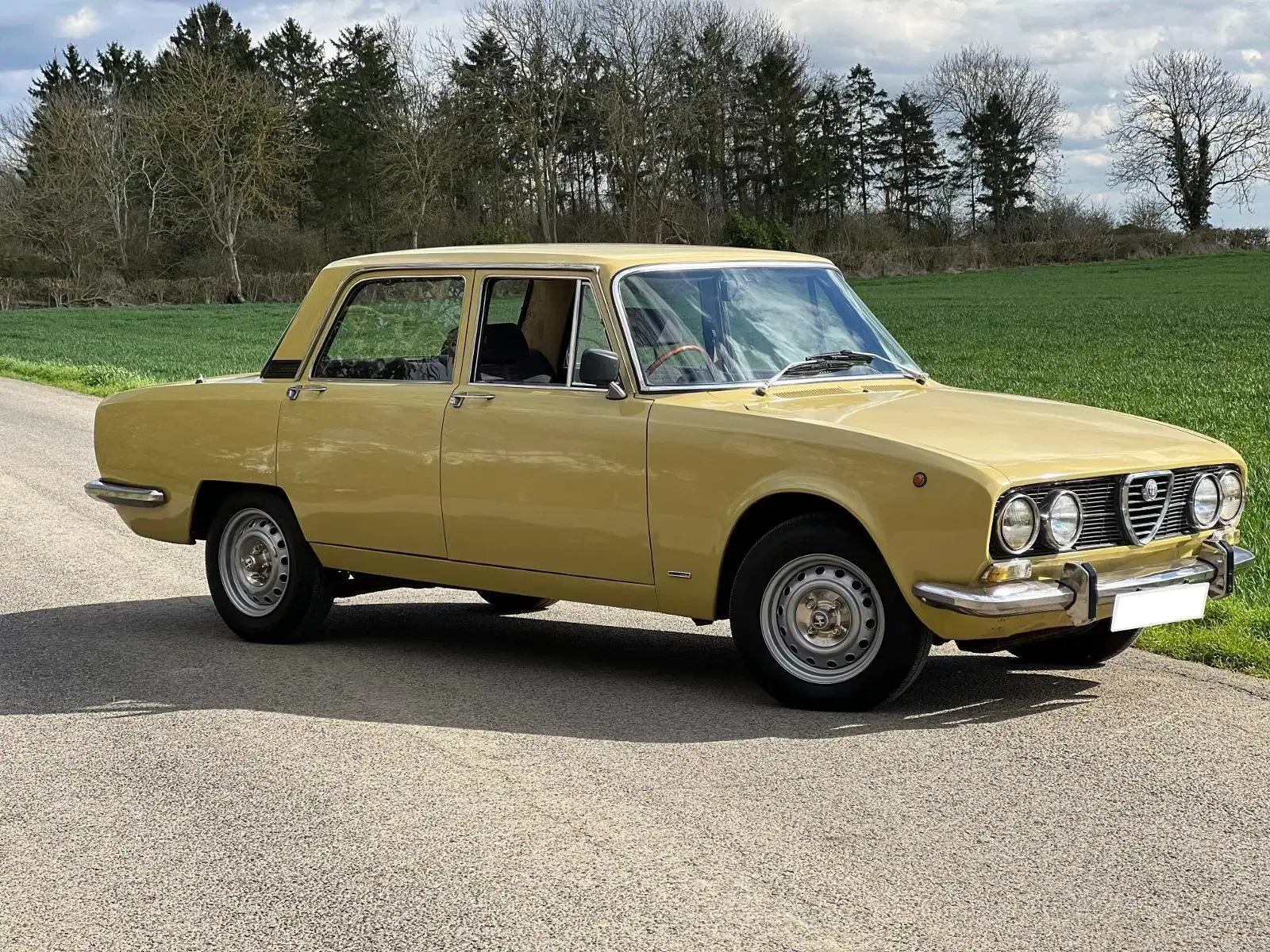RARER THAN RARE – THE ALFA ROMEO 2000 BERLINA
25 June 2024
Some cars of the 1970s are greeted with the words “My dad/mum/teacher/pet goldfish used to have one of those,” but an Alfa Romeo 2000 Berlina never seems to fall into this category. During this writer’s (very distant) youth, it was transport for the ‘smart set’ at the local yachting marina, all suntans, dark glasses, and cocktails on the deck.
Such types (although the men often affected Jason King moustaches) would have laughed at Ro-style wheels, go-faster stripes, and other stylistic excesses. The Sunday Express may have rudely compared the 2000’s lines as somewhere between a telephone box and Reginald Maudling (a former Chancellor of the Exchequer not renowned for his glamour). But the 2000 was the sort of car for those drivers who cared more about engineering integrity than being first away at the traffic lights.

The 2000 Berlina’s origins can be traced to Alfa Romeo’s need to replace the 2600 Berlina, their 1962 – 68 large saloon for lawyers and bankers. Developing a completely new model to compete in world markets with Jaguar and Mercedes-Benz was economically unviable, but Alfa needed a flagship saloon to maintain its image. There were also countless owners of small businesses who might have opted for a rival marque in the absence of a flagship saloon.
The solution was a larger version of the 1962 Giulia Berlina, with an elongated wheelbase and a 1779cc engine. The 1750 Berlina debuted in 1968, and in 1971, Alfa enlarged the four-cylinder light-alloy twin-cam engine to 1,962cc to create the 2000. Your friendly local dealer would probably tell you about its 150 bhp at 5,500 rpm power output, top speed of 115 mph, and 0-60 in nine seconds.
The 2000 Berlina’s specification also includes all-disc brakes, a five-speed transmission, and Veglia instruments, as befitting an Alfa Romeo. Keen enthusiasts of the marque also noted the wider shield in the front grille.
The latest Alfa Romeo was rather expensive in the UK; in 1973, it cost £2,499, when a Ford Granada 3.0 GXL was £2,204, a Rover 3500S was £2,368, and a Triumph 2.5 PI Mk.2 was £2,038. The closest alternatives to the 2000 Berlina in the UK were the Lancia 2000 IE Berlina for £2,543 or possibly a Peugeot 504 Ti for £2,162. These were cars for owners who placed quality above mere fashion, and Motor raved that when they tested 1750 Berlina:
We were frankly impressed; we expected high performance with very good handling and road holding, but we were surprised by the comfort, refinement, and quietness which accompanied the full four-seat accommodation and ample luggage space. Now we have tried its successor, the 2000 saloon – and again we are impressed.
In their view the 2000 was “definitely an even better car than the 1750”. Meanwhile, the great motoring writer Bill Boddy thought:
It is essentially a lively car, emphasised by the crisp exhaust note and a shrill whine at certain speeds which emanates from the transmission or back axle and is not confined to the geared-up fifth speed.
An owner would expect nothing less from a 2000 Berlina.
Production ended after 89,840 units in 1977 with the launch of the Alfetta 2000. This 1973 example offered for sale by Hill Farm Automotives is one of the few in this country and a reminder that the Berlina is as important an Alfa Romeo as its Coupe and Spider stablemates. It is one of the ultimate Q-cars of the 1970s, with its deliberately low-key looks belying its performance.
And, to quote a reviewer of the 1972 London Motor Show, the 2000 gave “sporting drivers some real power under their command”.
With Thanks To: hill Farm Automotives - https://ebayshowroom.ebaymotorspro.co.uk/emp/showroom.html?cid=_X6UETP73SVY3YAYCQCLZA426PI______
